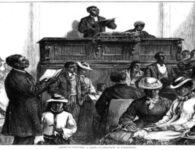From the eighteenth to the mid nineteenth centuries, the term lynching did not have any racial implications. Opponents of slavery in pre-Civil War America and cattle rustlers, gamblers, horse thieves, and other “desperados” in the South and Old West were nineteenth-century targets.
online fioricet
fioricet buy
From the 1880s onward, however, mob violence increasingly reflected white America’s contempt for various racial, ethnic, and cultural groups. African-Americans especially, and sometimes Native Americans, Latinos, Jews, Asian immigrants, and European newcomers, felt the fury of these violent mobs.
In an era when racist theories prompted “true Americans” to assert their imagined superiority through imperialist ventures, mob violence became the domestic means of asserting white dominance. Occasionally, this complemented the profit motive, when the lynching of a successful black farmer or immigrant merchant opened new economic opportunities for local whites and simultaneously reaffirmed everyone’s “place” in the social hierarchy. Sometimes lynching was aimed at unpopular ideas: labor union organizers, political radicals, critics of America’s role in World War I, and civil rights advocates were targets.
African-Americans suffered grievously under lynch laws. With the close of Reconstruction in the late 1870s, southern whites were determined to end northern and black participation in the region’s affairs, and northerners exhibited a growing indifference toward the civil rights of black Americans. Taking its cue from this intersectional white harmony, the federal government abandoned its oversight of constitutional protections. Southern and border states responded with the Jim Crow laws of the 1890s, and white mobs flourished. With blacks barred from voting, public office, and jury service, officials felt no obligation to respect minority interests or safeguard minority lives. In addition to lynchings of individuals, dozens of race riots–with blacks as victims–scarred the national landscape from Wilmington, North Carolina, in 1898 to Tulsa, Oklahoma, in 1921.
Between 1882 (when reliable statistics were first collected) and 1968 (when the classic forms of lynching had disappeared), 4,743 persons died of lynching, 3,446 of them black men and women. Mississippi (539 black victims, 42 white) led this grim parade of death, followed by Georgia (492, 39), Texas (352, 141), Louisiana (335, 56), and Alabama (299, 48). From 1882 to 1901, the annual number nationally usually exceeded 100; the year 1892 had a record 230 deaths (161 black, 69 white). Although lynchings declined somewhat in the twentieth century, there were still 97 in 1908 (89 black, 8 white), 83 in the racially troubled postwar year of 1919 (76, 7, plus some 25 race riots), 30 in 1926 (23, 7), and 28 in 1933 (24, 4).
However, statistics do not tell the entire story. These were recorded lynchings; others were never reported beyond the community involved. Furthermore, mobs used especially sadistic tactics when blacks were the prime targets. By the 1890s, lynchers increasingly employed burning, torture, and dismemberment to prolong suffering and excite a “festive atmosphere” among the killers and onlookers. White families brought small children to watch, newspapers sometimes carried advance notices, railroad agents sold excursion tickets to announced lynching sites, and mobs cut off black victims’ fingers, toes, ears, or genitalia as souvenirs. Nor was it necessarily the handiwork of a local rabble; not infrequently, the mob was encouraged or led by people prominent in the area’s political and business circles. Lynching had become a ritual of interracial social control and recreation rather than simply a punishment for crime.




















1 Comment
It’s always been in Our history of the injustice OUR people of Indians, Spanish, Korea, black red and brown have been victims of the suffering from the 18th centre to Now.